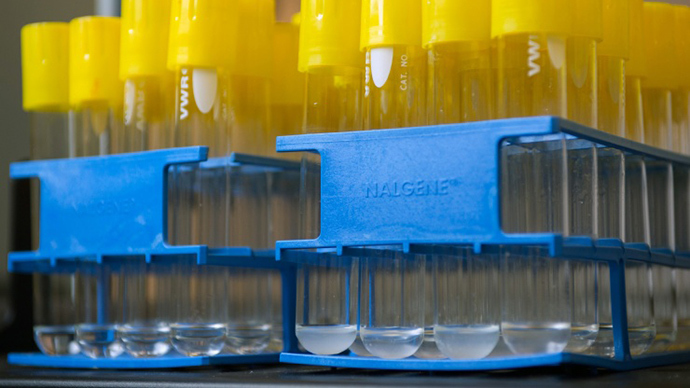Highly powerful new biofuel could change rocket engines forever

Scientists have scored a breakthrough in high-energy biofuels by producing a bacterium that synthesizes highly-efficient pinene, a hydrocarbon made by trees. It could soon replace existing alternatives and usher in a new era of rocket engines.
Researchers have struggled for years with the problem of cheaper options to the JP-10, the very expensive petroleum-based fuel used in aerospace applications. What was underneath their nose the whole time isn’t a petroleum alternative, but a biological one – one that has just been made six times more efficient than previous attempts – synthesized by a Georgia Tech graduate who inserted enzymes from trees into the new bacterium and boosted pinene production dramatically.
The research, funded by Georgia Tech startup funds and US Department of Energy’s Office of Science, first appeared in the journal ACS Synthetic Biology in February 27, 2014.
“We have made a sustainable precursor to a tactical fuel with a high energy density,” said Stephan Sarria’s supervisor, assistant professor in the School of Chemistry and Biochemistry, Pamela Peralta-Yahya. Jet and rocket fuels have very high energy densities. Less of the fuel is needed to produce a much more substantial acceleration than fuel found in a car. The weight is minimized, which is absolutely essential for rocket engine industry at a time when the existing JP-10, as well as being much less efficient, also costs $25 per liter.
“If you are trying to make an alternative to gasoline, you are competing against $3 per gallon,” Peralta-Yahya explained. “That requires a long optimization process. Our process will be competitive with $25 per gallon in a much shorter time,” she said of the advantages.
The molecular structure of JP-10 makes it a current rocket fuel
favorite, with its multiple carbon atom rings, which account for
its energy density. But the amounts of JP-10 that can be
extracted from each barrel of oil are limited. This accounts for
the steep hike in the price per gallon.
The improvement using pinene was reached with the use of new enzymes. Several were tested for the purpose of being inserted into the E. coli bacterium. However the team was still getting only 32 milligrams per liter.
After some successes and miscalculations (which is understandable, where enzymes and bacteria are concerned), Peralta-Yahya and Sarria realized that to really compete with JP-10 they needed to address the inherent process inhibitions, which were affected by altering substrate concentrations of the enzyme.
“Now we need either an enzyme that is not inhibited at high substrate concentrations, or we need a pathway that is able to maintain low substrate concentrations throughout the run. Both of these are difficult, but not insurmountable, problems,” Peralta-Yahya said.
But to blow JP-10 out of the water, the pinene produced from inserting the enzyme into the E. coli will need to be increased by 26 times.
Theoretically, lower costs than JP-10 are achievable. Once they get their production levels up, there’s no telling what engines we’ll see produced. They will be much more light, fast and efficient. The incentive must come from high levels of stable pinene production.














